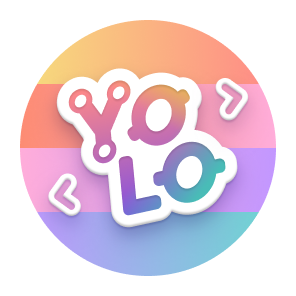For the SmartLayer blockchain technology, visit Smart Token Labs
This project is a keyboard project unrelated to the blockchain technology.
Welcome to the SmartLayer repository. This project is dedicated to providing a unique keyboard layout that seamlessly combines multi-lingual typing, efficient math symbol input, and the familiarity of the standard US keyboard layout. SmartLayer is designed to enhance productivity for users who frequently type in multiple languages and require quick access to a wide range of mathematical symbols, all while maintaining a minimal learning curve.
While numerous keyboard layouts are optimized for polyglot European users, especially those from Western Europe, many of these layouts deviate from the standard US keyboard. This deviation often requires users to unlearn and relearn key placements, leading to inefficiencies and frustrations. Furthermore, many existing keyboards offer mathematical capabilities but, in doing so, reduce their multi-lingual support.
At its core, this layout retains the intuitive design of the US keyboard, ensuring that users don't have to unlearn anything. Every symbol and letter functions exactly like the US keyboard. However, it goes beyond by offering up to seven levels of symbols for most keys, allowing for a vast array of symbols and characters. This is a significant enhancement over most layouts, which typically offer a maximum of four levels. Dead key as a necessary evil is introduced, but only on the 3rd layer; therefore, it doesn't affect the typing of English, Spanish or German, but other languages like French and Italian would involve using dead keys.
The SmartLayer is a unique keyboard layout designed to bridge the gap between mathematical typing, multi-lingual capabilities, and familiarity with the standard US keyboard layout.
At its core, this layout retains the intuitive design of the US keyboard, ensuring that users don't have to unlearn anything. Every symbol and letter functions exactly like the US keyboard. However, it goes beyond by offering up to seven levels of symbols for most keys, allowing for a vast array of symbols and characters. This is a significant enhancement over most layouts, which typically offer a maximum of four levels.
The layout introduces the dead key as a necessary evil, but only on the 3rd layer. This design choice ensures that typing in English, Spanish, or German remains unaffected, while other languages like French and Italian would involve using dead keys.
- No unlearning: No symbol changed from the popular US English QWERTY layout.
- No use of dead keys for many European languages: If you type English, Spanish, German, Swedish, Danish, Norwegian or Icelandic, you don't need to use dead keys. Other languages, such as French, still need dead keys.
- Seven-Level Keyboard: Most keys can produce up to seven distinct symbols organized into four columns.
- Currencies: Enhanced currency support including the Euro (€) and Bitcoin (₿) symbols.
- Greek Letters: Incorporates frequently used Greek letters like α and ξ, more to come.
- Italic Letters: Introduces an Italic variant for every English alphabet letter, represented in Unicode. Used in "let 𝑥 be 0".
- Subscript & Superscript: Offers superscript digits, letters, and operators, plus subscript digits.
- Additional Symbols: Incorporates a range of symbols from slashes to note symbols, catering to diverse typing needs.
This is a seven-level keyboard, meaning that each key on the keyboard can produce up to seven symbols.
These symbols are organized into four columns in this chart:
| Level | Modifier Combination | Symbols Produced | With the example of letter A |
|---|---|---|---|
| 1 | Direct Press | First Column lower | a |
| 2 | Shift | First Column upper | A |
| 3 | AltGr | Second Column lower | á |
| 4 | AltGr + Shift | Second Column upper | Á |
| 5 | Super (e.g., Windows Key) | Third Column lower | 𝑎 |
| 6 | Super + Shift | Third Column upper | 𝐴 |
| 7 | Super + AltGr | Forth Column lower | ᵃ |
| 8 | Super + AltGr + Shift | Not Defined. No one likes pressing 4 keys together |
This table only covers the usage of additions to The "English (intl., with AltGr dead keys)" layout.
| Symbol Name | How to Type Them | Examples |
|---|---|---|
| Euro Sign (€) | AltGr + 4 | "The price is €50." |
| Bitcoin (₿) | AltGr + Shift + 4 | "The current value of Bitcoin is ₿1 = $40,000." |
| Greek Letters (α, ξ) | (Based on key mapping) | "The angle α is 60°." "The variable ξ represents..." |
| Italic Letters (e.g., 𝑛) | Super + [letter] | "Let 𝑛 be the number of elements." |
| Subscript Digits | Super + [digit] | "The chemical formula is H₂O." |
| Superscript Numbers (e.g., ⁴) | Shift + Super + [digit] | "The value is 𝑥⁴." |
| Superscript Letters | Shift + Super + [letter] | "The variable 𝑦ᵃ represents..." |
| Fractional Slash (⁄) | AltGr + Shift + 1 | "The ratio is 1⁄4." "The fraction 1⁄7 represents..." |
| Big Solidus (⧸) | Super + / | "Business Profile꞉ P⧸U Pty Ltd.pdf" (replaces slash in filenames) |
| Modifier Letter Colon (꞉) | AltGr + ; | "Business Profile꞉ P⧸U Pty Ltd.pdf" (replaces colon in filenames) |
| Note Symbols† (†, ‡, §, ‖, ¶) | (Based on key mapping) | "Refer to the note†." "See the section‡." "Paragraph starts with¶." |
| Numero Symbol (№) | Super + Shift + \ | "Product №12345." |
| Cardinal Signs (º, ª) | Super + - and Super + Shift + - | "1º lugar." "2ª posición." |
| Degree Sign (°) | AltGr + 5 | "The temperature is 25°." "Calle Mayor 10°, Madrid." |
| Registered Trademark (®) and Trademark (™) | AltGr + v, AltGr + Shift + v | Enron®'s NewProduct™ |
† Note Symbols: The first four traditional order of note symbols in English have been added. The traditional order of these symbols in English is *, †, ‡, §, ‖, ¶. The first exists on standard keyboards, the section sign § and the pilcrow sign ¶ existed in "English (intl., with AltGr dead keys)", this project piles the rest three symbols on the backslash key.
In this repository, we provide implementations of the SmartLayer for Linux and *nix systems using the XKB system.
The layout is based on a modification of the "English (intl., with AltGr dead keys)" keyboard layout, originally developed by Microsoft1. It's optimized for typing mathematical symbols and expressions without compromising the original layout's multi-lingual capabilities.
The implementation is designed as a diff file against the /usr/share/X11/xkb/symbols/us file that comes with Ubuntu, replacing the "English (intl., with AltGr dead keys)" layout directly. The repository is updated with every Ubuntu LTS release.
To use the SmartLayer on your Linux/*nix system, follow the installation instructions provided in the repository.
For Ubuntu 23.04:
- Replace
/usr/share/X11/xkb/symbols/uswithlayout/ubuntu-23.04.us. - In X11, select the "English (intl., with AltGr dead keys)" layout.
- For Wayland users, configure the layout within your Wayland compositor settings.
This layout supersedes the original "English (intl., with AltGr dead keys)". While a dedicated OS package would be ideal, none currently exists. For other Linux versions or X11, apply layout/ubuntu-23.04.diff to /usr/share/X11/xkb/symbols/us using the patch command.
This is done by first going into the directory, then run patch with the input being the diff file corrisponding to your Linux distribution, or the version most near to it. Try a dry run first:
$ cd /usr/share/X11/xkb/symbols
$ sudo patch --dry-run --force < ~/code/SmartLayer/layout/ubuntu-23.04.diff
After the dry run, if it shows no errors, do a real run:
$ sudo patch --force < ~/code/SmartLayer/layout/ubuntu-23.04.diff
Once this is done, don't forget to go to Gnome Settings, choose Keyboard and choose "English (intl., with AltGr dead keys)".
There are additional instructions if you need a special configuration for small keyboards.
While the layout aims to enhance the typing experience, there are a few known issues and areas for potential improvement:
- Missing Superscript Minus: Currently, there is no superscript minus symbol because the muscular and feminine cardinal took the place where you would expect superscript minus. I am guilty of not using the symbol, as I use superscripts for elliptic curve math, primarily involving addition. Still, a solution is needed.
- Unused Alt Key Combinations: The combinations
alt+g,alt+shift+gandalt+mandalt+shift+mcurrently do not produce any special symbols. - Insufficient Greek letters. One suggestion was that there should be enough Greek letters to denote the SARS-CoV-2 variants, but there were just too many.
These issues will be considered for future updates and improvements.
- Superscript
oᵒ, and superscriptaᵃ can be used for muscular and feminine cardinal º and ª, so having all of them on a keyboard layout appears over-designed. However, cardinal numbers have underscores in certain fonts; they are visually not replaceable for each other. People who speak Spanish or Portuguese can tell. - Degree Sign: Several symbols resemble the Degree Sign. The authentic Degree Sign is located on the number key 5. Pressing Alt+shift+0 twice produces the symbol °, which closely resembles the Degree Sign. However, it's the circle atop the letter Ů. While the muscular cardinal sign and the superscript letter
omay also appear similar to the Degree Sign, they serve different functions. - Usually, capital N followed by muscular cardinal º, when typed together like this Nº, suffices as a substitute for Numero sign №. We kept both anyway.
- The Latin Alpha (ɑ) and Copyright (©) symbols have little real-life uses. Pity.
If you want to play around getting new symbols to a keyboard layout, you must first find its code point. To get the Unicode point of a character, use this command in a *nix PC - note the symbol is passed to the echo command:
echo -n "𐞥" | iconv -f utf8 -t UTF-32 | hexdump -e '/2 "U+%04X\n"'
U+FEFF
U+0000
U+07A5
U+0001
The example shows that 𐞥 is U107A5. You can use this trick to get the Unicode codepoint for everything mentioned in this document.
Footnotes
-
The "English (intl., with AltGr dead keys)" layout, originally developed by Microsoft, enables typing in virtually any Latin-based script. It is optimised explicitly for Spanish and French, designed to minimize the use of dead keys. Only a few words, such as "bilingüe" (bilingual in Spanish), require the use of dead keys. ↩






